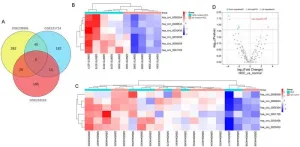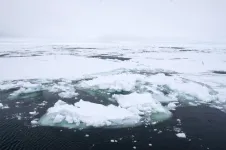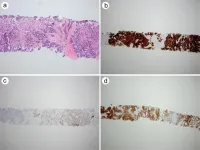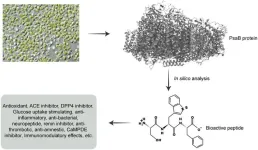(Press-News.org) Magic is one of the oldest forms of entertainment, and much of its enchantment is said to rely on the audience not knowing how the tricks are done.
However, while magicians swear to keep their secrets forever when they embark on their profession they are happy to share the tricks of their trade in certain circumstances, a new study shows.
Illusionists who took part in major new research thought it was OK to expose their own techniques, but not those invented by others, and also believe it is acceptable to reveal the secrets behind tricks invented by someone who has since died.
They didn’t think it was right to share the workings of a magic trick just to gain public visibility, but thought it was acceptable to share their secrets if they were being paid for their knowledge.
Exposing secrets was seen as more acceptable when it was done to promote good, such as enhancing wellbeing, undertaking scientific research or protecting the public from fraud. And magicians rated exposing magic tricks frequently found in commercial magic sets for children to be significantly less acceptable than those bought in dedicated magic shops that cater to adults.
The study, published in The Journal of Performance Magic Research, was led by Professor Brian Rappert, from the University of Exeter, and Dr Gustav Kuhn, from the University of Plymouth.
They are both members of The Magic Circle and while Professor Rappert uses entertainment magic to convey how disclosure and concealment figure in everyday life and international relations, Dr Kuhn’s work seeks to unravel the science behind magic.
In the study, they highlighted that while magician societies enforce strict rules to safeguard their secrets, the internet has fundamentally changed the ease by which tricks are being exposed.
As such, they said, the research aims to demonstrate some of the complex considerations magicians face and what they truly think about exposing secrets.
Professor Rappert said: “We wanted to question ways of thinking about what makes magic magical and, thereby, how we can experience wonder and awe. Those interviewed offered a wider range of justifications for why exposures within performances of magic were justified. Some said it was perfectly fine to unveil a closely guarded magic secret if it’s in the context of performing a trick that relies on a different method. Indeed, it was widely contended that exposure could enhance audiences’ experiences.”
Dr Kuhn said: “Our research reveals the fascinating and often contradictory dynamic around when it’s deemed acceptable to reveal a magic secret. The magicians we spoke to were torn between protecting their secrets, enabling new entrants into the art and rewarding magicians for their individual contributions. Mass online tutorials mean traditional transactional expectations that served to police the dissemination of information are ever more under strain. While the moral compact that those buying method instructions would “keep the Magician’s Code” was always more aspiration than prognosis in the past, today when methods for vast numbers of magic effects are only a few keystrokes away, the prospects that information about methods will be closely bound is ever more remote.”
END
Magicians don’t mind sharing the secrets behind tricks – if they are their own
2024-10-27
ELSE PRESS RELEASES FROM THIS DATE:
No incentive for older birds to make new friends
2024-10-27
Like people, birds have fewer friends as they age, but the reasons why are unclear. New research suggests they may just have no drive to.
In humans, it’s often been assumed that older people have fewer friends because they’re pickier about who they spend their time with. There’s also the issue that there are fewer people of their own age around.
But it’s hard to pick apart the various potential causes for humans, so researchers have turned to animals. The team behind the new research, led by Imperial College London, studied an isolated population of sparrows on the island of Lundy, in the Bristol Channel.
By mapping the ...
Development and validation of a new prognostic model for predicting survival outcomes in patients with acute-on-chronic liver failure
2024-10-27
Background and Aims
Early determination of prognosis in patients with acute-on-chronic liver failure (ACLF) is crucial for optimizing treatment options and liver allocation. This study aimed to identify risk factors associated with ACLF and to develop new prognostic models that accurately predict patient outcomes.
Methods
We retrospectively selected 1,952 hospitalized patients diagnosed with ACLF between January 2010 and June 2018. This cohort was used to develop new prognostic scores, which were subsequently validated in external groups.
Results
The study included 1,386 ACLF patients and identified six independent ...
Identification and validation of the Hsa_circ_0001726/miR-140-3p/KRAS axis in hepatocellular carcinoma based on microarray analyses and experiments
2024-10-27
Background and Aims
Hepatocellular carcinoma (HCC) is one of the most fatal malignancies. Epigenetic mechanisms have revealed that noncoding RNAs, such as microRNAs (miRNAs) and circular RNAs (circRNAs), are involved in HCC progression. This study aimed to construct a circRNA-miRNA-mRNA network in HCC and validate one axis within the network.
Methods
HCC-related transcriptome data were obtained from the Gene Expression Omnibus, and HCC-related genes were sourced from GeneCards to identify differentially expressed circRNAs and miRNAs. ...
New study warns that melting Arctic sea-ice could affect global ocean circulation
2024-10-27
“Our finding that enhanced melting of Arctic sea-ice likely resulted in significant cooling in northern Europe in the earth’s past is alarming,” says Mohamed Ezat from the iC3 Polar Research Hub, lead author of the new study. “This reminds us that the planet’s climate is a delicate balance, easily disrupted by changes in temperature and ice cover.”
Ice-free summer conditions are expected to occur in the Arctic Ocean from the year 2050 onwards.
Earlier this ...
Researchers test imlifidase enzyme versus plasma exchange in removing donor-specific antibodies in kidney transplant rejection trial
2024-10-27
San Diego, CA (October 26, 2024) — For kidney transplant recipients experiencing antibody-mediated rejection, the current standard of care involves removing donor-specific antibodies (DSAs) through plasmapheresis (PLEX)—a procedure that removes antibodies from the plasma portion of the blood. Results from a recent clinical trial reveal that an investigational drug called imlifidase, which cleaves and inactivates the type of antibodies that include DSAs, is more effective than PLEX. The research will be presented at ASN Kidney ...
Preclinical studies test novel gene therapy for treating IgA nephropathy
2024-10-26
San Diego, CA (October 26, 2024) — IgA nephropathy is an autoimmune kidney disease, and complement, a component of the innate immune system, plays a role in the condition’s pathogenesis. Investigators have developed and tested a novel gene therapy that enters kidney cells and enables them to block complement activation. The research will be presented at ASN Kidney Week 2024 October 23– 27.
The gene therapy, called PS-002, uses a modified virus to treat kidney cells called podocytes. Administration of PS-002 in a mouse model of IgA nephropathy reduced signs of kidney dysfunction, lowered complement ...
Trial assesses antibody therapy for chronic active antibody-mediated kidney transplant rejection
2024-10-26
San Diego, CA (October 26, 2024) — Chronic active antibody-mediated rejection (caAMR) is a common cause of allograft loss after transplantation, with no approved therapies. Clazakizumab, a monoclonal antibody that targets the inflammatory cytokine interleukin-6 (IL-6), stabilized kidney transplant recipients’ kidney function in a phase 2 trial. Investigators now have data from a phase 3 trial with clazakizumab. The findings from the Phase 3 IMAGINE trial, the largest placebo-controlled study in kidney transplant recipients with caAMR, will be ...
High-impact clinical trials generate promising results for improving kidney health: Part 2
2024-10-26
The results of numerous high-impact phase 3 clinical trials that could affect kidney-related medical care will be presented in-person at ASN Kidney Week 2024 October 23–27.
Hyponatremia, or a chronically low blood salt level, is the most common electrolyte disorder in hospitalized patients, and is associated with higher risks of death and re-hospitalization. In a recent trial, 2,173 hospitalized patients with hyponatremia from 9 centers across Europe were assigned to undergo either targeted correction of blood salt levels according to guidelines or to receive routine care for hyponatremia. The primary outcome was the combined ...
Expression of carbonic anhydrase IX as a novel diagnostic marker for differentiating pleural mesothelioma from non-small cell lung carcinoma
2024-10-26
Background and objectives
Mesothelioma is an aggressive tumor with a poor prognosis. Histological diagnosis of mesothelioma using limited tissue samples can be challenging. Carbonic anhydrase IX (CAIX) is a transmembrane protein that is overexpressed in a variety of solid tumors. This study aimed to investigate the clinical utility of CAIX expression in the differential diagnosis of pleural mesothelioma from non-small cell lung carcinoma (NSCLC).
Methods
Unstained tissue microarray slides composed of 56 cases of pleural mesothelioma and 82 cases of NSCLC were subjected to immunohistochemical staining using a mouse anti-human antibody against CAIX.
Results
Of the 38 epithelioid mesothelioma ...
In silico assessment of photosystem I P700 chlorophyll a apoprotein A2 (PsaB) from Chlorella vulgaris (green microalga) as a source of bioactive peptides
2024-10-26
Background and objectives
Chlorella vulgaris is a green, photosynthetic microalga in the phylum Chlorophyta. The goal of our study was to perform a bioinformatics analysis of Photosystem I P700 chlorophyll a apoprotein A2, one of its photosynthesis-related proteins, and to hunt for potent bioactive peptides.
Methods
To generate peptides and estimate the safety and efficacy of each bioactive peptide, we employed the tools BIOPEP-UWM™, PeptideRanker, DBAASP, and ToxinPred. PepDraw was used to understand the physicochemical properties ...





